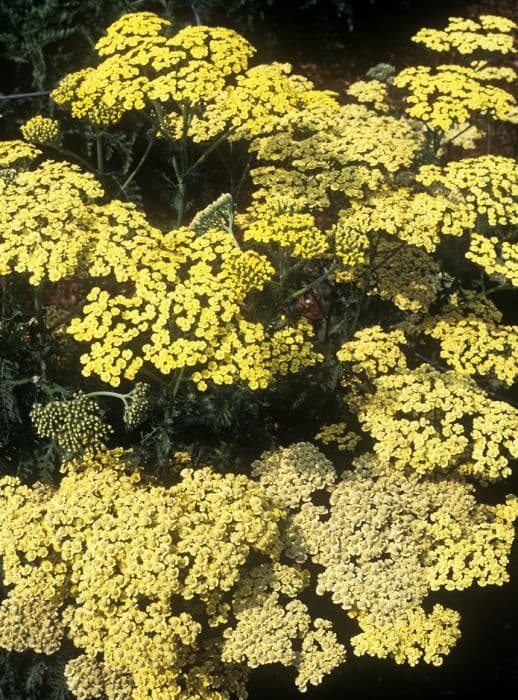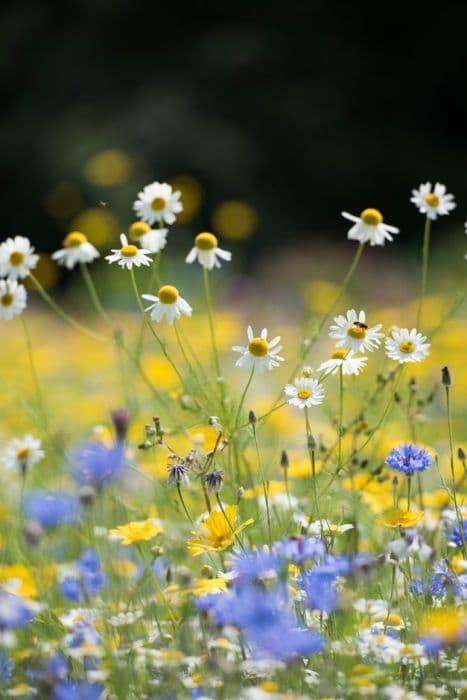Coneflower Rudbeckia Summerina Yellow = 'Et Rdb 02' (PBR) (Summerina Series)

ABOUT
The Rudbeckia Summerina Yellow, commonly known as the Coneflower, has a striking appearance. The plant features a central, raised cone that is typically dark brown or black, providing a dramatic contrast to the bright yellow petals that radiate around it. These petals are elongated and daisy-like, creating an eye-catching display that is reminiscent of the sun. The vivid yellow hue gives the impression of warmth and sunshine, even on overcast days. The foliage of the Coneflower is another point of interest. It is usually green, with leaves that can range from lance-shaped to rounded, with edges that might be serrated or smooth. The overall look of the plant is robust and bushy, which allows it to create a full and vibrant presence in any garden setting. The Coneflower tends to have a sturdy stem that holds the flower heads upright, making them an excellent feature in floral arrangements or as focal points in borders and beds. Overall, Rudbeckia Summerina Yellow imbues gardens with its bright, cheerful flowers that attract butterflies and other pollinators, enhancing the biodiversity of the area.
About this plant
 Names
NamesSynonyms
Coneflower, Black-eyed Susan, Gloriosa Daisy.
Common names
Rudbeckia Summerina Yellow = 'Et Rdb 02' (PBR) (Summerina Series)
 Toxicity
ToxicityTo humans
The plant commonly known as Coneflower, specifically the Rudbeckia Summerina Yellow, is not considered highly toxic to humans. In general, ingestion of parts of echinacea plants may potentially cause mild gastrointestinal upsets, such as nausea or diarrhea, in some individuals. However, these plants are often used in herbal remedies and are not commonly associated with serious poisoning or long-term consequences from incidental ingestion.
To pets
The Coneflower, including the Rudbeckia Summerina Yellow variety, is generally considered to be non-toxic to pets such as dogs and cats. These plants are not usually associated with poisoning and do not typically cause adverse reactions if ingested by pets. However, each animal may react differently, and if a pet consumes a large amount of the plant material, it might experience mild digestive discomfort. If you notice any unusual symptoms after your pet consumes any plant, it is always a good idea to consult with a veterinarian.
 Characteristics
CharacteristicsLife cycle
Perennials
Foliage type
Deciduous
Color of leaves
Green
Flower color
Yellow
Height
2 feet (60 cm)
Spread
2 feet (60 cm)
Plant type
Herb
Hardiness zones
5
Native area
North America
Benefits
 General Benefits
General Benefits- Long Blooming Period: The plant typically flowers from early summer to fall, providing a long-lasting display of vibrant yellow blooms.
- Low Maintenance: It is generally easy to care for, needing minimal upkeep once established, making it suitable for gardeners of all skill levels.
- Drought Tolerant: Once established, it is capable of withstanding periods of dry weather, reducing the need for frequent watering.
- Attraction for Pollinators: The bright flowers attract bees, butterflies, and other beneficial insects, promoting biodiversity in the garden.
- Deer Resistant: The plant is not a preferred food source for deer, which helps prevent damage in areas where deer are common.
- Landscape Versatility: It can be used in a variety of garden settings, including borders, containers, and as cut flowers for indoor arrangements.
- Colorful Impact: The bright yellow flowers add a splash of color to the garden and can be used to create striking visual contrasts with other plants.
- Hardy Nature: It is resilient in a range of climates and can thrive in USDA Zones 4 through 9, suiting many geographical locations.
 Medical Properties
Medical PropertiesThis plant is not used for medical purposes.
 Air-purifying Qualities
Air-purifying QualitiesThis plant is not specifically known for air purifying qualities.
 Other Uses
Other Uses- Rudbeckia 'Summerina Yellow', also known as Coneflower, can be used in eco-friendly dye production, as its bright yellow flowers may provide a source of natural color for fabrics.
- Coneflower petals can be used in craft projects such as making natural confetti for weddings or eco-friendly events because of their vibrant color and biodegradability.
- The dried seed heads of Coneflower can add an interesting texture to homemade potpourris, contributing to a rustic aesthetic while utilizing all parts of the plant.
- Rudbeckia 'Summerina Yellow' can be a motivational tool in gardening therapy programs, providing an attractive and rewarding plant for participants to care for.
- The distinctive shape of Coneflower seed heads can be used in printmaking, where they can be dipped in paint and pressed onto paper to create unique patterns.
- During autumn, the sturdy stems of Coneflower can be used in building mini scarecrows or other garden decorations for fall-themed displays.
- Coneflower can be incorporated into a natural insect hotel by using the stiff stems and seed heads to create habitats for beneficial insects.
- The flowers of Coneflower can be used in the creation of natural bookmarks by pressing them between paper, which can then be laminated for durability.
- Rudbeckia 'Summerina Yellow' can be used in the classroom for educational purposes, such as studying the life cycle of a plant from seed to flower.
- Fallen Coneflower petals can be collected and used in sensory bins for children, allowing them to explore textures and colors in a hands-on learning activity.
Interesting Facts
 Feng Shui
Feng ShuiThe Coneflower is not used in Feng Shui practice.
 Zodiac Sign Compitability
Zodiac Sign CompitabilityThe Coneflower is not used in astrology practice.
 Plant Symbolism
Plant Symbolism- Optimism: The bright yellow color of the Black-Eyed Susan, which is commonly associated with the Rudbeckia genus, often symbolizes a sense of positivity and joy, much like the sun shining on a warm day.
- Justice: In American folklore, the Black-Eyed Susan is sometimes connected to the notion of justice, likely owing to the flower's bold appearance which can be interpreted as standing firm and upright.
- Encouragement: Given its resilient nature, the Black-Eyed Susan often represents encouragement for people to stay strong and persevere through difficulties, much like how the flower stands tall and thrives.
 Water
WaterConeflowers, or Echinacea, should be watered deeply but infrequently to encourage strong root growth. They prefer soil that is well-draining and can tolerate some drought once established. During the growing season, watering once a week with about 1 inch of water (which is roughly equivalent to 0.6 gallons per square yard) is usually sufficient. In hotter, dryer periods, you may need to water twice a week, whereas during cooler or rainy periods, less watering is needed. It is best to water early in the morning at the base of the plant to keep foliage dry and prevent fungal diseases.
 Light
LightConeflowers thrive in full sun conditions, which means they require at least 6 to 8 hours of direct sunlight per day. They are adaptable and can tolerate partial shade; however, the best flowering occurs when they are placed in an area that receives abundant sunshine. A south or west-facing garden spot is ideal for maximum light exposure.
 Temperature
TemperatureConeflowers prefer moderate conditions and can tolerate a range of temperatures. They can survive minimal winter temperatures down to about -30°F and are comfortable up to temperatures around the high 80°F. The ideal temperature for growing coneflowers is between 65°F and 75°F, which allows for optimal growth and flowering.
 Pruning
PruningPruning coneflowers can help encourage more blooms and maintain plant health. Deadhead spent flowers regularly during the blooming season to promote continuous flowering. In late winter or early spring, cut back the entire plant to about 4 inches above the ground to allow for fresh, vigorous growth in the spring. It's also the best time to remove any dead or damaged foliage.
 Cleaning
CleaningAs needed
 Soil
SoilConeflowers (Echinacea) like Rudbeckia Summerina Yellow thrive best in well-drained soil with a mix of compost or other organic materials. Aim for a pH between 6.0 and 7.0 for optimal growth.
 Repotting
RepottingConeflowers such as Rudbeckia Summerina Yellow don't require frequent repotting; every 2-3 years or when root-bound should suffice.
 Humidity & Misting
Humidity & MistingConeflowers like Rudbeckia Summerina Yellow prefer moderate ambient humidity but are quite adaptable and can tolerate the average range found in outdoor environments.
 Suitable locations
Suitable locationsIndoor
Place in a sunny spot, maintain moderate moisture.
Outdoor
Full sun, well-draining soil, natural rainfall usually sufficient.
Hardiness zone
5-9 USDA
 Life cycle
Life cycleRudbeckia Summerina Yellow, also known as Coneflower or Black-eyed Susan, undergoes a typical perennial plant life cycle. It begins with seed germination, where warmth and moisture encourage the dormant seeds to sprout. The seedlings develop into young plants with a rosette of leaves at the soil surface, and a root system that extends into the ground. As the plants mature, they produce stems, leaves, and flower buds, leading to the flowering stage, which showcases the plant's signature yellow flowers with a dark brown center cone during summer and autumn. After pollination, often by insects, the flowers produce seeds that are dispersed by wind, animals, or human intervention. The plant then enters a period of dormancy during the winter months, with the top growth dying back and the roots remaining alive underground, ready to regrow the following spring.
 Propogation
PropogationPropogation time
Spring to early summer
The Rudbeckia Summerina Yellow, often simply referred to as Summerina, is commonly propagated by division, which is a technique best performed in the spring or fall. This method involves carefully digging up the plant and separating the clump into smaller sections, ensuring that each new section has a portion of the root system attached. These divisions can then be replanted in a well-prepared soil, spaced about 18 to 24 inches (approximately 45 to 60 centimeters) apart to allow for growth and air circulation. It is important to water the new plantings thoroughly to help establish them in their new locations. Division helps to rejuvenate older plants and is a quick way to multiply the number of Summerina plants in your garden.









